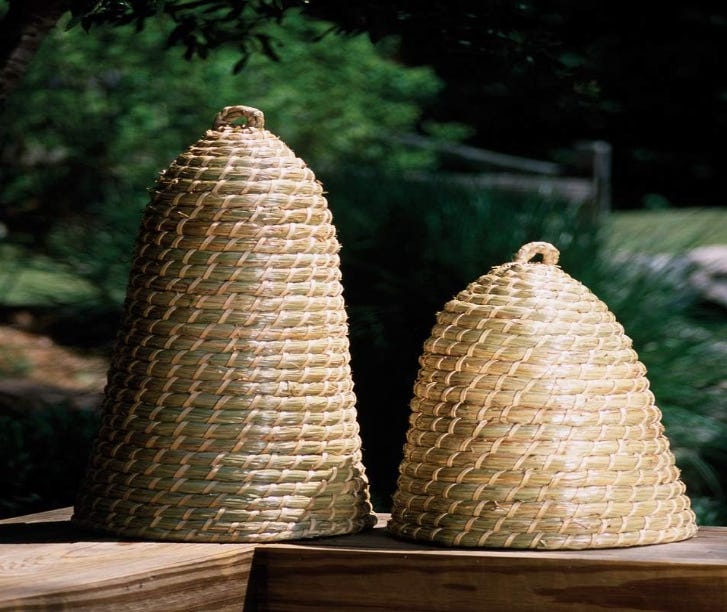
The cottage garden: where wild meets welcoming, where vegetables share space with hollyhocks, and where every path winds with purpose. These gardens aren't just nostalgic—they're brilliantly functional and steeped in tradition. In this first installment of our Rooted in Charm series, let’s explore the essential design principles that make a rustic cottage garden more than a jumble of pretty plants.
🏡 What Makes a Garden a Cottage Garden?
At its heart, a cottage garden reflects:
Practical abundance: Food, herbs, and flowers mingle.
Unstructured beauty: Paths meander, edges blur, and surprises abound.
Self-sufficiency: Many plants are multipurpose—used in the kitchen, the apothecary, and the vase.
Romantic layers: Think textured foliage, cascading flowers, and vertical climbers.
This style originated in English working-class villages, where small plots had to be both productive and ornamental. Today, this aesthetic fits perfectly with homesteads, permaculture gardens, and wellness landscapes.
🌿 1. Embrace Controlled Chaos
Cottage gardens look informal, but the best ones are thoughtfully layered. Use a three-tier system:
Tall: Delphiniums, hollyhocks, climbers, trellised vines
Medium: Foxgloves, herbs like lavender or rosemary, upright perennials
Low: Ground covers like thyme, strawberries, creeping Jenny, or alyssum
Let plants spill over edges and tuck themselves into corners. But avoid overcrowding—build in space for air circulation and maintenance access.
🪵 2. Curves Over Corners
Paths and beds should flow. Use curves, arcs, and organic shapes to soften the landscape. This is not the place for symmetry or rigid lines.
Design Tip:
Lay out a garden hose on the ground to experiment with curved bed borders before committing. Use reclaimed bricks, natural stone, or gravel to mark them permanently.

🪻 3. Combine Ornamentals with Edibles
This is where form meets function. Pair cabbages with calendula. Let pole beans climb alongside clematis. Plant mint near your stone wall, strawberries at the path’s edge, and intersperse nasturtiums for color and pest control.
The result is a garden that feeds the soul and the table.
🪞 4. Use Focal Points That Tell a Story
Add character with:
A vintage iron gate or salvaged fence post
A weathered wooden bench or rocker
A terra cotta pot spilling petunias or creeping herbs
A handmade birdhouse or sundial
Even a worn watering can turned planter
Let these elements anchor the eye and create moments of visual rest in an otherwise bursting landscape.

🐝 SIDEBAR: Build a Miniature Bee Skep Apiary
Add charm and pollinator lore to your cottage garden with a decorative bee skep vignette. These traditional coiled straw hives evoke the days when every garden had honeybees—and every gardener, a few skeps near the herbs.
DIY Display Idea:
Nestle 2–3 skeps inside a shallow saltbox-style weather box (or crate with pitched roof). Cluster them as if they form a rustic apiary. Add a small balance-beam or faux well nearby to suggest a water-drawing arm or old-world beekeeping practice.
🛒 Skeps like these can be found at rustic décor shops or online (search Kalalou bee skeps on Amazon).
✨ No real bees required
🌞 5. Think in Seasons
Layer for year-round beauty, not just a single peak. That means:
Early: crocus, hellebores, primrose
Mid: roses, foxglove, lavender
Late: coneflowers, rudbeckia, dahlias
Winter: evergreen herbs, dried seed heads, structural grasses
Succession planting ensures continual charm from frost to frost.
🧺 6. Use What You Have
Cottage gardens were always about resourcefulness:
Reuse bricks, stones, and old garden tools
Make your compost
Save seeds
Let plants self-sow and naturalize
If something breaks? Leave it to rust beautifully under a cascade of sweet peas.
🐝 7. Invite Life In
Your rustic cottage garden should be alive with pollinators and beneficial insects. Choose open-pollinated flowers, heirloom seeds, and native species where possible. Provide small saucers of water, piles of twigs, and leave seed heads for birds.
🧭 Quick Planning Checklist
Paths - Gravel, brick, or mulch—3' wide min
Focal Point - Bench, arbor, sundial, sculpture
Tall Backdrop - Climbers, shrubs, trellis plants
Herbs & Edibles - Lavender, sage, thyme, strawberries
Ground Covers - Chamomile, alyssum, creeping thyme
Toolshed or Gate - Weathered wood, vintage style
🪴 Coming Next from Phil Wilson:
The 8 Best Herbs for a Cottage Garden – A detailed walk through timeless herbal companions for every rustic garden.
Until next time…
I am…
Phil Wilson…
And, here’s to living an Herbal Lifestyle With You!




